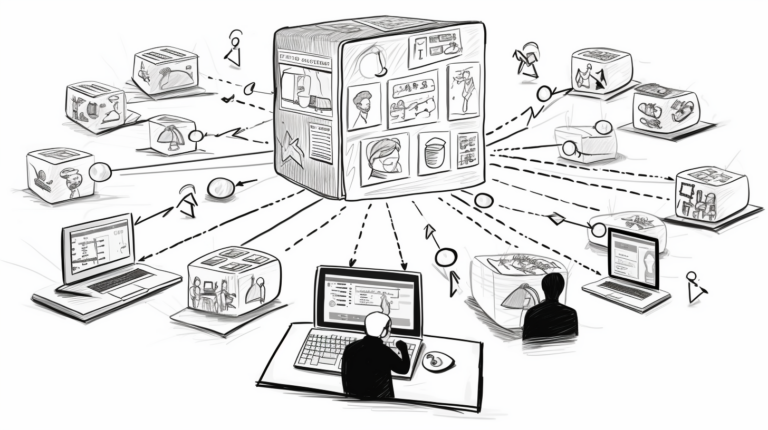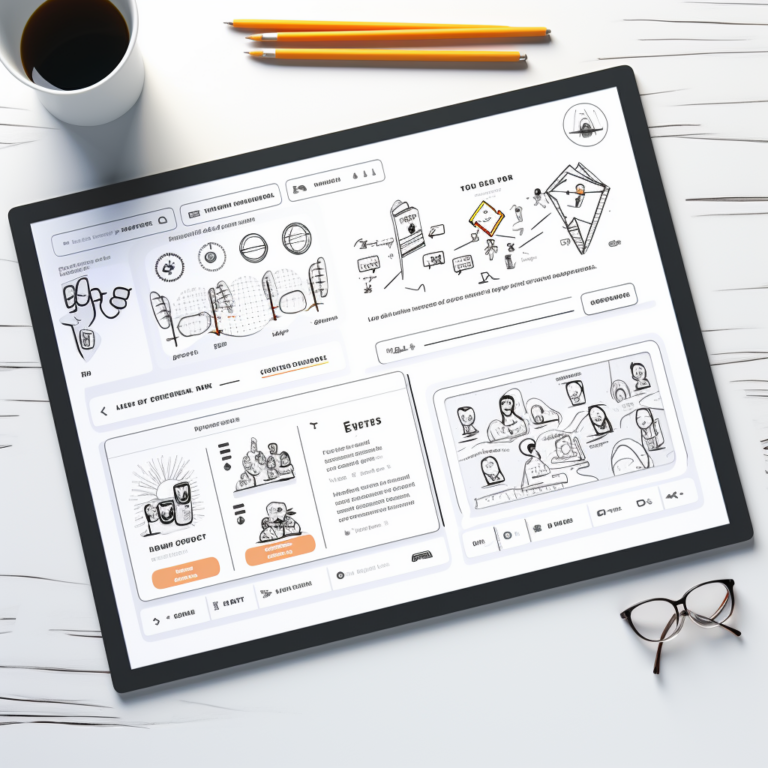Home Our Services Website Accessibiliy Services in Australia
Website Accessibility: What You Need to Know
What is Website Accessibility Design?
Website accessibility refers to the design and development of websites that can be used by people with disabilities. In other words, it is about ensuring that websites are accessible and usable by everyone, including those with visual, auditory, physical, or cognitive disabilities.
Accessible websites are designed to be user-friendly and navigable by people with disabilities, ensuring that they can access and use the content on the website effectively. This includes providing text alternatives for images, using clear and simple language, providing captions or transcripts for videos, and ensuring that the website can be navigated using only a keyboard.
Website accessibility is important because it ensures that people with disabilities can access information and services on the internet, just like everyone else. It is the practice of designing and developing websites that can be used by people with disabilities. It is important for ensuring equal access to information and services on the internet and is a legal requirement in many countries.
Designing an Inclusive Website Improves the User Experience and Reaches a Wider Audience
What is WCAG?
WCAG stands for Web Content Accessibility Guidelines. It is a set of guidelines developed by the World Wide Web Consortium (W3C) to provide a framework for making web content more accessible to people with disabilities.
WCAG includes a set of recommendations for creating accessible websites, such as providing text alternatives for non-text content, using clear and simple language, ensuring that website functionality can be accessed using only a keyboard, and providing sufficient time for users to read and use content. WCAG also includes guidelines for making multimedia content, such as videos and audio, accessible to people with disabilities.
WCAG is essential for website designers and developers because it provides a standardised framework for ensuring website accessibility. By following WCAG guidelines, website designers and developers can create websites that are accessible to everyone, regardless of their abilities.
WCAG is also recognized globally as a standard for website accessibility. Many countries have adopted WCAG guidelines as the legal standard for website accessibility, and it is widely used by organisations and governments around the world.
Accessible websites
WCAG guidelines are crucial for website designers and developers to ensure that the website is accessible to people with disabilities. By following these guidelines, our designers can create websites that are accessible to everyone, regardless of their abilities. Compliance with WCAG can help organisations meet legal requirements for accessibility and improve the usability and user experience of the website for all users.
WCAG guidelines provide a set of best practices for website design that can help improve the overall user experience. Some of these best practices include providing clear and simple language and making navigation easy. By implementing these guidelines, our website designers and developers can create websites that are not only accessible but also user-friendly.
WCAG compliance is particularly important for government agency websites, as many countries require a specific level of compliance to ensure accessibility for people with disabilities. By following WCAG guidelines, the team at Butterfly can create websites that are inclusive and accessible to everyone, improving the user experience and ensuring legal compliance.

Website Accessibility services
WCAG website audit
Our WCAG website audit is a comprehensive evaluation of a website’s compliance with Web Content Accessibility Guidelines (WCAG). It involves an in-depth analysis of the website’s design, content, and functionality to identify any barriers to accessibility that may prevent people with disabilities from using the website effectively.
During a WCAG website audit, an accessibility expert will review the website against a set of criteria defined by WCAG. They will use automated tools and manual testing methods to assess the website’s accessibility level and identify any issues that may affect people with disabilities. The audit will typically include a review of website content, such as text, images, and multimedia, as well as website functionality, such as forms, navigation, and user interface controls.
The results of the WCAG website audit are presented in a detailed report that outlines any accessibility barriers that were identified and provides recommendations for addressing these issues. The report may include suggestions for making changes to the website’s design, content, and functionality to improve accessibility, as well as information on how to test the website’s accessibility level going forward.
A WCAG website audit is an essential step for organisations that want to ensure that their website is accessible to everyone, including people with disabilities. It helps organisations identify any accessibility issues and provides a roadmap for making the necessary changes to improve accessibility and comply with legal requirements.
WCAG website design
When designing a WCAG compliant website we consider several key factors to ensure that your website is accessible to people with disabilities including:
- Navigation: Make sure the website is easy to navigate using a keyboard, screen reader or other assistive technology. This includes providing clear and consistent navigation menus and using descriptive link text.
- Colour contrast: Use a colour scheme with sufficient contrast between the text and background to make it easier for people with visual impairments to read the content.
- Font size and type: Use legible fonts with a size of at least 16px and avoid using all caps, italics, or underlining as they can be difficult to read for some people.
- Images and multimedia: Provide alternative text descriptions for all images and multimedia, and avoid using flashing or rapidly blinking content that can cause seizures.
- Forms: Ensure that forms are accessible to keyboard-only users, provide clear instructions and labels, and indicate any errors in a way that is clear to all users.
- Audio and video: Provide closed captioning and transcripts for all audio and video content to make it accessible to people with hearing impairments.
- Testing: Conduct regular accessibility testing to identify any issues that may affect accessibility and address them promptly.
When we design a WCAG compliant website we carefully consider navigation, colour contrast, font size and type, images and multimedia, forms, audio and video, testing, and user feedback. By following these guidelines, we can create a website that is accessible to all users, regardless of their abilities.
Why Choose Butterfly
Butterfly has over 5 years experience with WCAG and building accessible websites. Talk to one of our digital specialists to find out how we can help you with Website Accessibility.
Expertise in WCAG Compliance
At Butterfly, we have a deep understanding of the Web Content Accessibility Guidelines (WCAG) and how to ensure that websites are accessible to people with disabilities. We follow the latest accessibility guidelines to ensure that your website is accessible to everyone, regardless of their abilities.
Accessible Design
We believe that accessible design is an essential part of web development. Our team of expert designers creates websites that are not only visually stunning but also accessible and user-friendly. We use design principles and techniques that make it easier for people with disabilities to use your website, such as high contrast, clear typography, and keyboard navigation.
Website Accessibility Services
We offer a range of website accessibility services to help our clients ensure that their websites are accessible to everyone. These services include accessibility audits and accessibility testing. By partnering with Butterfly, you can be confident that your website is fully accessible and compliant with relevant accessibility standards and regulations.
Frequently Asked Question on Website Accessibility Design
What is an example of accessibility design?
An example of accessibility design is using high-contrast colour schemes and font sizes that are easy to read for people with visual impairments.
What is accessibility in UX design?
Accessibility in UX design refers to creating digital products that can be used by people with disabilities or impairments, such as visual or hearing impairments.
What are the four accessibility design principles?
The four accessibility design principles are perceivable, operable, understandable, and robust. Perceivable means that content can be perceived by all users, operable means that users can interact with the content using various assistive technologies, understandable means that content is easy to understand, and robust means that content can be interpreted reliably by various assistive technologies.
Is accessibility UI or UX?
Accessibility is more related to UX design than UI design. UI design focuses on the visual and interactive components of a product, while accessibility focuses on making the product usable for people with disabilities.
What are the principles of accessibility design?
The principles of accessibility design include making content perceivable, operable, understandable, and robust. This means using alternatives for non-text content, providing captions and transcripts for audio and video content, designing keyboard accessible interfaces, using clear and concise language, and ensuring compatibility with various assistive technologies.
What are three reasons for designing for accessibility?
Three reasons for designing for accessibility include improving usability for all users, meeting legal requirements, and reaching a wider audience that includes people with disabilities who may benefit from the product.



